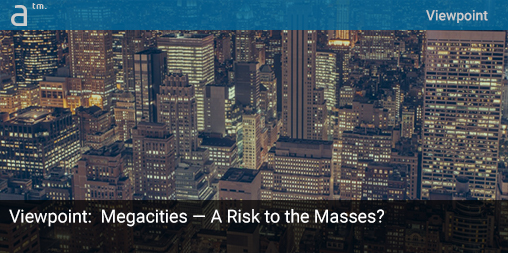BACK IN 2017, WORLD LEADERS VOICED THEIR CONCERN over the issue of rapidly growing cities. Fast forward to 2019, and just over half of the world’s population is currently living in cities. By 2030, it is predicted that this level will increase to two-thirds of the population. Cities are in dire need of urban planning to mitigate the risks that come with densely populated areas. After all, megacities are at risk of being particularly vulnerable to natural disasters, poverty, and adequate escape routes.
A major consideration is the impact of higher populations on day-to-day life. Consider this: in 2016, there were 512 cities around the world with at least 1 million citizens. Currently, one in five of us lives in these cities. On top of this, it is expected that by 2030, an additional 150 cities will break the 1 million mark.
This doesn’t include the truly massive cities either. Dubbed ‘megacities,’ the 31 super-sized cities recorded in 2014 as having more than 10 million people living within them will rise to 41 by 2030. The density of these cities means that a small problem can quickly ripple through so many people and become a huge issue. Traffic flow can be managed, roads can have laws applied to them, but managing human beings is a whole different ball game. This is where computerized crowd simulation certainly shines, as it allows experts to gauge the most likely way people will choose to enter, move around, and leave a given building. This technology can be extended to predict the flow of people within entire districts, helping with designing and planning city layouts more efficiently.

Crowd simulation software solutions are critical to aiding the urban development of fast-moving cities and megacities around the world.
The technology was built in response to addressing knowledge gaps in the field. One such project that brought crowd simulation program MassMotion into effect was the redevelopment of the New York Fulton Centre interchange. With six subway lines already in place that had been designed without much futureproofing, the use of crowd simulation software proved vital for its successful redevelopment. From here, the program has flourished under academic guidance and use, and can now be applied to a variety of planning stages, such as for city planning.
Development points for successful urban planning cover:
- Streamlined model building, thanks to the ability to import entire BIM objects into the software. Structure analysis software will prove vital in the process of designing these buildings.
- Independent virtual pedestrians within the software that will react to situations as they develop.
- Virtual pedestrians with pre-programmable agendas.
New technology will prove fundamental for urban planning in these densely populated cities. With the ability to model vast volumes of people in a scenario, the use of crowd simulation will be vital in city planning for the coming years.
About the Author
Amy Hodgetts is a content writer on behalf of Oasys, a leading commercial developer of engineering software. Ms. Hodgetts is a graduate from the University of Glasgow, with an undergraduate MA (Hons) in English Language
Key Sources
https://www.prb.org/disaster-risk/




Reader Comments
Comments for this story are closed